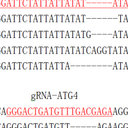Flabellipparicine, a Flabelliformide-Apparicine-Type Bisindole Alkaloid from Tabernaemontana divaricata.
Ключови думи
Резюме
Four new monoterpenoid bisindole alkaloids, flabellipparicine (1), 19,20-dihydrovobparicine (2), 10'-demethoxy-19,20-dihydrovobatensine D (3), and 3'-(2-oxopropyl)ervahanine A (4), and 10 known monoterpenoid indole alkaloids were isolated from the stems of Tabernaemontana divaricata. All structures were elucidated based on spectroscopic methods, and the absolute configuration of 1 was established using conformational analysis and TDDFT-ECD calculation of selected stereoisomers. Compound 1 represents the first flabelliformide-apparicine-type bisindole alkaloid, in which the flabelliformide-like unit connects to the apparicine-like unit with a C-3-C-22' bond and an N-1-C-16' bond to form an uncommon five-membered ring between the two monomers. All alkaloids were evaluated for their cytotoxicity against two human cancer cell lines, MCF-7 and A-549. Compounds 2, 4, and 14 exhibited cytotoxicity against MCF-7 and A-549 with IC50 values in the range of 2 nM to 8 μM.



